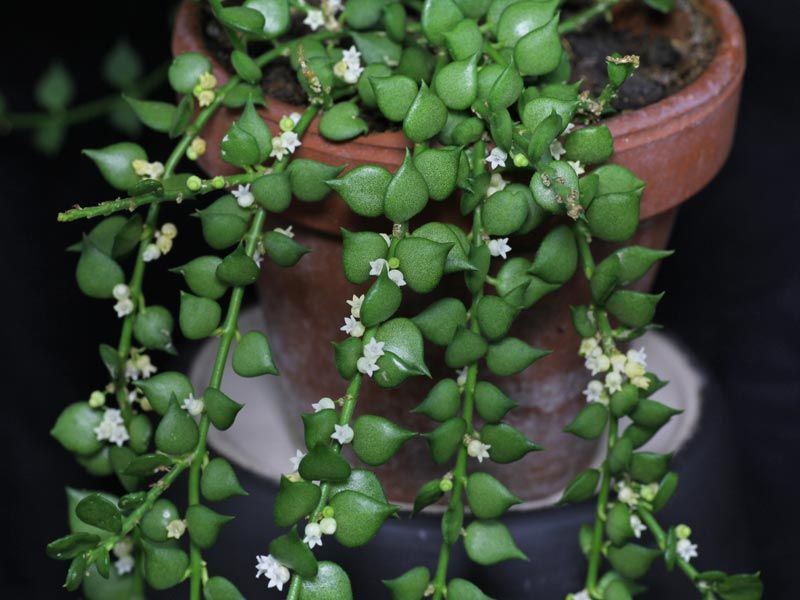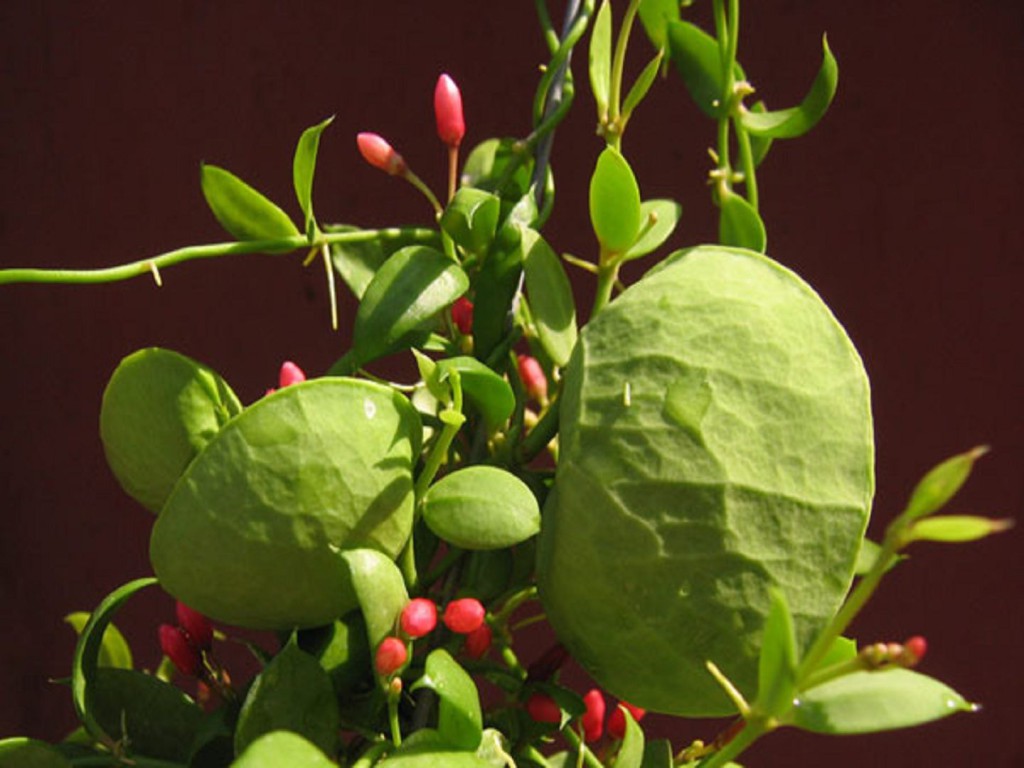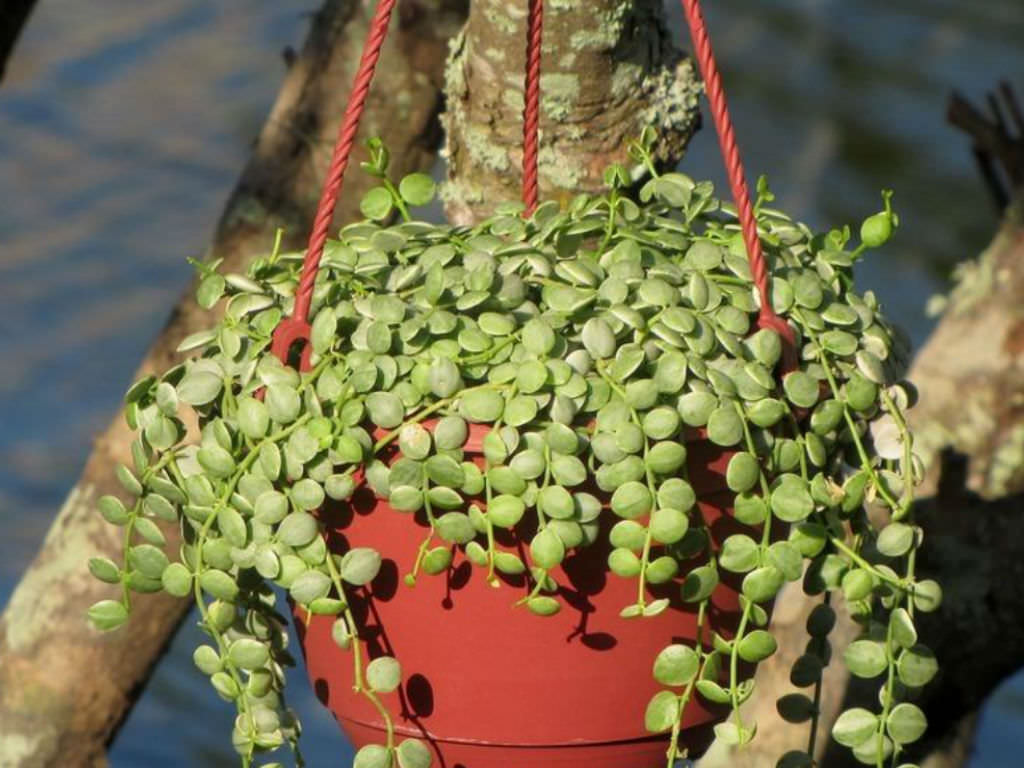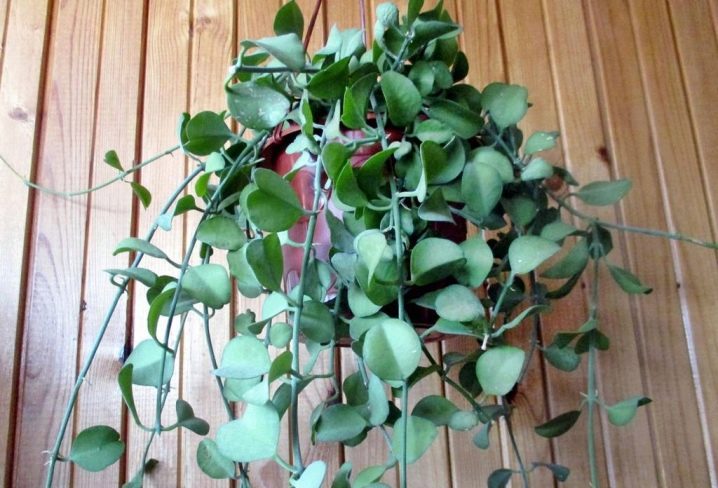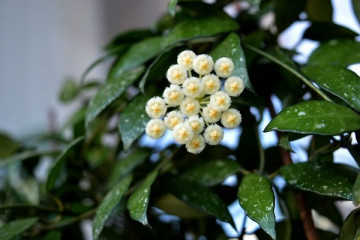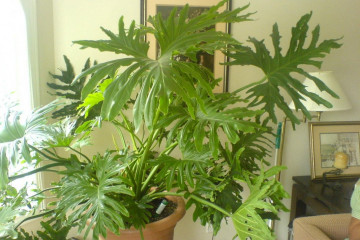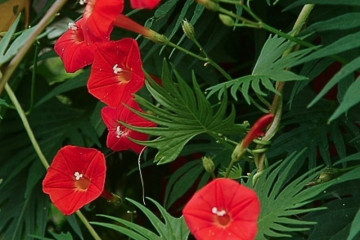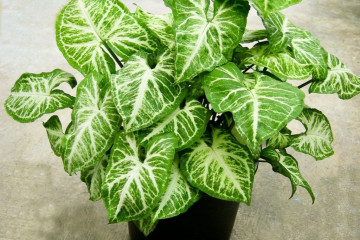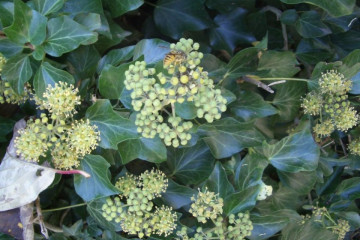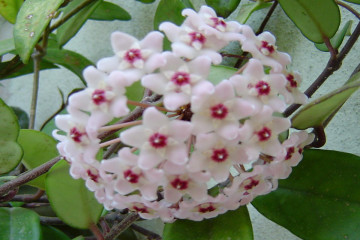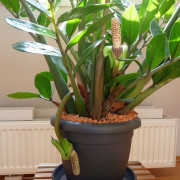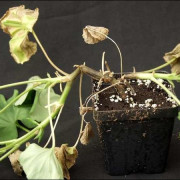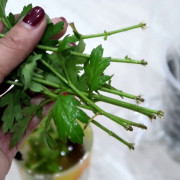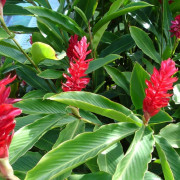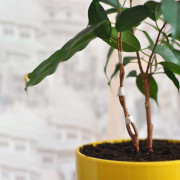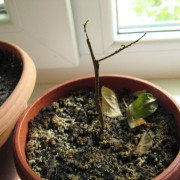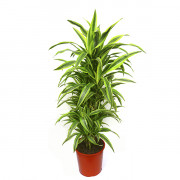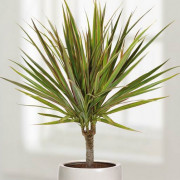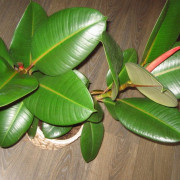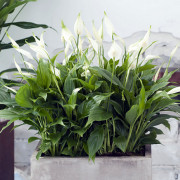Dyschidia Russifolia - Ovata, Million Hearts, Singularis and Rusk-leaved
Content:
Among the vines grown at home, there are many unusual and exotic varieties. But few plants can compete in uniqueness with dyschidia.
Botanical characteristics
Dyschidia Rusifolia (Latin dischidia ruscifolia) is a sprawling liana native to the rainforests of India, Polynesia and Australia. Liana belongs to epiphytes, feeds on the sap of plants to which it is attached. When grown indoors, it grows well in a mixture of moss and pine bark.
Belongs to the Lastovniev family. Shoots are long, temp green. Has two types of foliage. The first type is opposite leaves, resembling a heart with a pointed tip. The second type of leaves is similar in shape to a coconut, reaching 5 cm in length. They are storehouses. The flowers are inconspicuous, small, they are pink, white. The appearance of the vine may differ depending on the variety.
Care features
This tropical plant needs to provide optimal conditions for normal growth. Properly selected care is also important.
Temperature
Liana belongs to thermophilic crops. It tolerates heat well. But it does not tolerate a drop in temperature. The temperature in the room should not be lower than +18 ℃. At temperatures from +25 to +30 ℃, dyschidia actively blooms.
Lighting
He prefers to be constantly in the sun. In this case, the sun's rays should not be direct. It is best if the light is diffused. Delicate leaves are susceptible to burns, so direct sunlight is destructive for vines.
Watering
Irrigation of the soil should be moderate. The soil must not be allowed to dry out constantly. Water as soon as the substrate is dry. In the summer, watered 3-4 times a week. In winter, one watering per week is enough.
Spraying
Spraying is carried out regularly with the same water as for irrigation. In winter and summer, spraying should be frequent, at least 4 times a week.
Humidity
Like all tropical plants, the vine loves high humidity. The minimum value is 40%. The higher the humidity, the better the flower will feel. In winter, next to the liana, you can put a plate with wet expanded clay and regularly add water to it.
Priming
Breathable soil with good drainage is best suited for planting. Heavy dense soil is not suitable for planting creepers. Orchid substrate can be used as a soil mixture. How to prepare the soil yourself:
- sphagnum;
- peat;
- sheet soil;
- river sand;
- charcoal.
All the necessary ingredients are mixed so that a homogeneous soil is obtained.
Top dressing
Caring for Ovate dyschidia at home, like other varieties, involves the application of fertilizers. Fertilizers for succulents or for decorative deciduous crops are used as top dressing. Fertilizers are applied no more than twice a month during the period of active growth of shoots.
Transfer
Liana does not like frequent transplants, she is transplanted only as a last resort. When a transplant is needed:
- after buying creepers in the store;
- if the pot has been damaged or has become too small;
- if the soil is depleted (transplantation is carried out every two years);
- there are parasites in the soil or the plant is sick.
The optimal time for transplanting is spring. The pot should not be too spacious, but also not small.
When it blooms
There is no specific period when flowering occurs. Liana can bloom both in early spring and late autumn. In rare cases, buds can appear even in winter. Flowering occurs once a year. Flowers are single and collected in small inflorescences. The petals are usually white, pink, or red.
How does it multiply
Liana reproduces in two ways - cuttings and seeds. Most flower growers prefer to grow dischidia from cuttings.
Seeds
The seeds can be purchased from a gardening store, or harvested from a houseplant. After flowering, a small box is formed, inside which there are seeds.
Planting process:
- Mix peat and sand, moisten the soil well.
- Plant the seeds so that there is enough space between them.
- Then sprinkle with peat.
- Cover the box with plastic, put in a warm place so that the seeds germinate faster.
- Until the shoots appear, the container can stand in direct sunlight.
- Every day, the film must be removed for 30 minutes to ventilate the ground.
After the seeds have germinated, the film is removed, and the container is removed in a place with diffused light. They are transplanted into pots after several full-fledged leaves have appeared.
Cuttings
How is the propagation of a plant at home:
- Young shoots, 8 to 10 cm long, are used as cuttings.
- The underside is cut at a 45 degree angle.
- Then the cut is dipped into crushed charcoal and a growth activator (Kornevin, succinic acid).
- Moisten the soil before planting the cutting.
- After the cuttings are planted in the ground and covered with a glass cover.
- The container is placed in a sunny place.
The cap is removed for 30 minutes every day. Also, the soil should not be allowed to dry out. Rooting takes about 1.5 months.
Possible problems
Growing vines does not always go smoothly. Often there is such a problem as pests. If you do not start a fight with them in time, the plant may die.
Pests
Liana suffers from two types of pests - mealybug and spider mite. Mealybug affects all parts of the plant. The first sign of this insect is a white bloom.
A sign of a spider mite is the appearance of a cobweb on the underside of the leaf. The mites are small, up to 1 mm long. Treating these pests with insecticides helps. If necessary, you need to carry out several sprays.
In addition to pests, other problems can arise. For example. The appearance of burns on foliage, if the pot is in bright sun. With excessive watering, the bark system begins to rot.
Common varieties
The best varieties for dyschidia for growing at home.
Ovate (Ovata)
A distinctive feature of the dischidia Ovata cultivar is its long, pink-colored stems. The leaves of the species Ovata dyschidia are rounded, penetrated with light veins. Young leaves are characterized by a pink tint, which gradually turns into green.
Nummularia
Dischidia Nummularia is one of the most popular varieties for home cultivation. As a rule, it is grown as an ampel plant in hanging pots. Hanging shoots, grow up to 1.5 m in length.The leaves are small, rounded. They look like coins. The flower can be grown as a liana if a support is installed next to it.
Ruskusolistnaya (russifolia variegata)
Dyschidia Ruskusolistnaya grows in length from 50 to 150 cm. The flowering period lasts all year round. Flowers are white. Small, five-petal. A faint honey aroma exudes. A characteristic feature of this variety is small fleshy leaves, shaped like a coin. Dyschidia Variegatnaya prefers to grow on light, slightly acidic soil with good drainage.
Scallop
This variety differs from other varieties in a large number of air roots. The foliage is oval, comb-shaped, due to which the plant received such a name. The leaf plate is light green. The crown is compact. The flowers are pink or rich cherry hue. They look like small jugs.
Apple leaf
Dyschidia Apple leaf got its name from the shape of the leaves. The leaves resemble a green apple. Sometimes the leaf plate is marbled.
Vidalia
The second name for dyschidia is Vidal. An unpretentious plant to grow. Shoots are long, thin. They are strewn with leaves of two types along the entire length. The first type is light green leaves. The second type has small bubbles with water inside. Pink flowers bloom on the plant twice a year.
Hirsuta
Dyschidia Hirsuta is one of the rarest and most unusual in appearance. The leaves are rounded, the tip is pointed. Foliage is not only green, but also burgundy with a silvery tint. The leaf plate is pubescent. Inflorescences are solitary, pitcher-shaped. The petals of a rich wine color.
Raffleza
Dischidia Rafflesiana has very long shoots that grow up to 5 m long. Each shoot produces a large number of thin white roots. On the shoots, leaves of two types are located - one is oblong-oval in shape and the second is small, round in shape.
Singularis
Dischidia Singularis has long shoots. Dyschidia Singularis with hard leaves, green in color with white streaks all over the leaf plate.
Dyschidia perfectly fits into any interior. The main advantage is that the plant is easy to care for. Thanks to the liana, you can add a little tropical jungle to your city apartment.
